#Cemí
Explore tagged Tumblr posts
Text
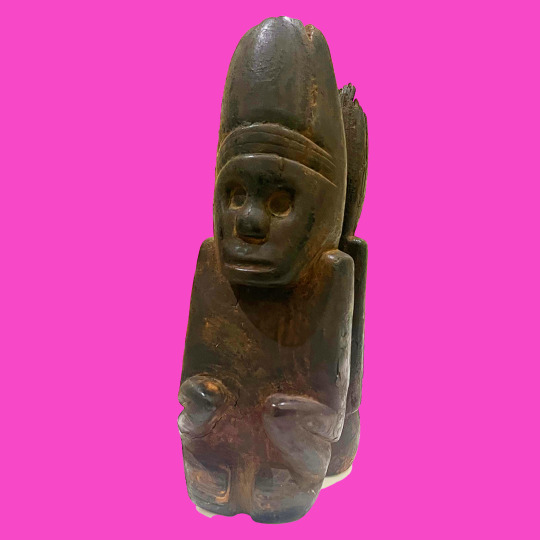
LauraGeller
NewYorkCity
Manhattan
ElMuseoDelBarrio
@elmuseo
TainoArt
Cemí
BriceDailyPhoto
0 notes
Note
OMG HAPPY BIRTHDAY !!!!
I hope you're having an amazing day!!!
Thank youuuuu
Ngl i think im falling sick and i have an interview tomorrow but overall safe to say its been nice
#i got a really cool shirt with my favorite taino cemí that says radiate positive energy and its now my favorite piece of clothing#ly!!
2 notes
·
View notes
Text
Caribbean Folk Saints and Mighty Dead: A Precursor
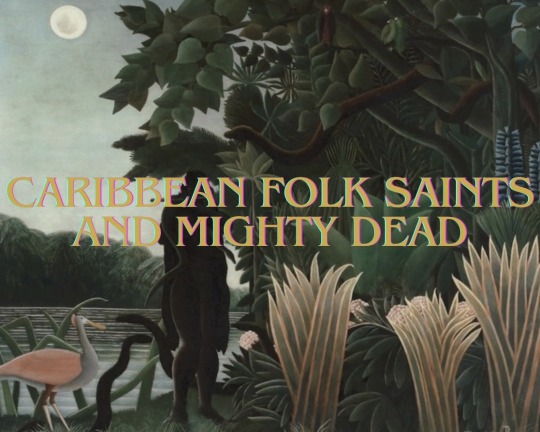
We all have family members who take on an almost Mythic quality after they pass on. They may have been a character in life, or a perhaps a spiritual practitioner. Maybe they were known for their generosity, or lack of it, or their strength or brilliance. Nonetheless, it is someone who, even in death, still makes an impact. In personal practices, we may work with these ancestors for guidance and healing, but what happens when their influence spreads past your family, into the local community or even entire country? This and many other strange circumstances often explain the origin and powers of Folk Saints and Elevated Dead. I will be going into the various Folk Saints and Deified Ancestors of the Caribbean, (including Florida), but before I can do that I need to explain where these spirits come from, and why they are so potent in our everyday lives.
What are Folk Saints and Mighty Dead?
Folk Saints and Mighty Dead are spirits of dead people who were either elevated in life, or became elevated after death. Their elevation often is then connected to their ability to grant various petitions made to them. Some of the Folk Saints I will be talking about were used to disguise other figures who were outlawed by the Colonial government at the time, while others are various figures of marginalized communities who gained sorcerous or otherworldly reputations after death.
Cuba and Florida are Lands of diaspora and syncretism. Many different traditions abound and each tradition has multiple lineages, so the classification of spirits differs depending on the worldview of the person explaining. Some practitioners work within a framework of Catholicism, some use elements and some flat-out reject Catholicism completely for decolonization purposes. For this reason, I have differentiated Folk Saints from the Mighty Dead.
Folk Saints will include those spirits who are worked with in a Catholic context, but are usually not canonized or not at first. On the other hand, the Mighty Dead will include spirits who are venerated amongst Indigenous and African traditions in Cuba as well as the surrounding areas, as to not group them under a title created by Colonizers. If you are Cuban or Caribbean, these Folk Saints and Mighty Dead offer power at a closer degree because they are more proximal to your Spirit Court, and may even already have bonds with them.
It is important to note, spirits like Orisha and Cemí have very specific protocols, manners and taboos when approaching them, so this is best done with the help of a priest, such as Oloricha or Babalawo, or a Taíno Behike. These are not energies you simply feel drawn to and work with. Orisha and Cemi are in some cases Deified Ancestors and others Personified Forces of Nature, among other things. This varies from the Ancestors and Spirits I will be discussing in this series.
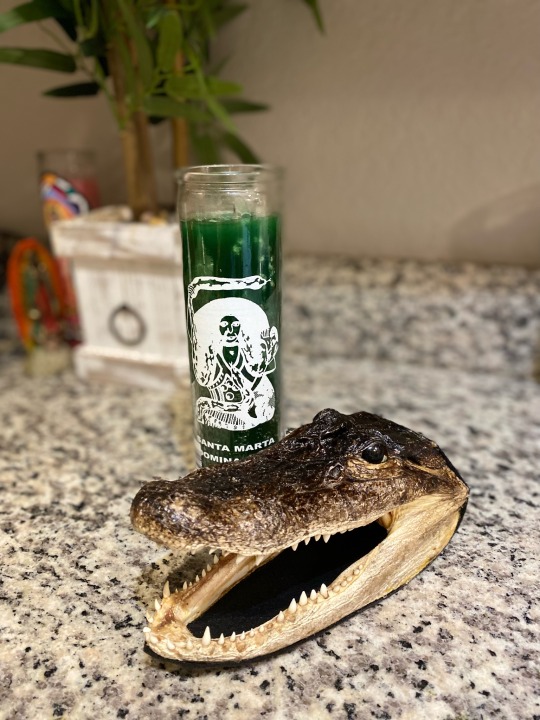
Benefits of Working with The Mighty Dead
Folk Saints and Ancestors give us a closer connection to the divine through their proximity to the Divine and their individual virtues and personalities. As with all spirit relationships, you will get out what you put in.
Folk Saints who are related to the Land you live on, such as Uncle Monday or Bessie Graham for us Floridians, can help to deepen your connection with the local community. They can help you to further your relationship with the Earth and introduce you to other Land spirits.
Spirits related to your Ancestry can help to work through generational issues. Some ancestral spirits, like José Martí or Guamá for us Cubans, are related to ideas of War, Rebellion, and overcoming oppression. These spirits can be worked with for the same pursuits of defeating oppressors in the modern day. Each spirit has a story and is multi-faceted, so it really depends on what your connection is to the Spirit and what you are capable of offering them.
How to Work with Deified Dead
Working with these spirits is individual to each spirit, based on what their heritage is, as well as their personal tastes. When starting out, it’s best to keep things simple. Instead of going and creating an entire altar dedicated to a spirit, begin by praying about it at your Bóveda or ancestral altar. Here, you may find that a spirit is not compatible with your current situation, or doesn’t want to work with you ever! Should the omens be good, however, and you may begin establishing a connection to that spirit Research and talking to other devotees can give you great insight into what a relationship with that Spirit can look like.
My formula for reaching out to these spirits is always different, but I follow basic principles. I always begin with a representation of the spirit, a small offering and a candle. The representation can be anything, from a statue to a printed picture or even just their name on some paper. The offering is in most cases water until the spirit makes other wants known to me, but when a spirit doesn’t take water I offer food or tobacco instead. The candle is something I was taught helps to enhance spirit communication, carrying messages between the worlds. It is helpful to research about whoever you are attempting to communicate with, and if possible you should speak to other practitioners who work with the same Spirit. Often times, this is someone-you-know’s father or grandmother. From here, you should sit with whatever entity you are contacting, allowing yourself to experience a personal relationship with them. I will share individual experiences of what each spirit has been like in practice for me, or people I know, but for beginning this is a good basic way to start out.
I look forward to sharing more about these incredible figures who influence my favorite corner of the world to this day.
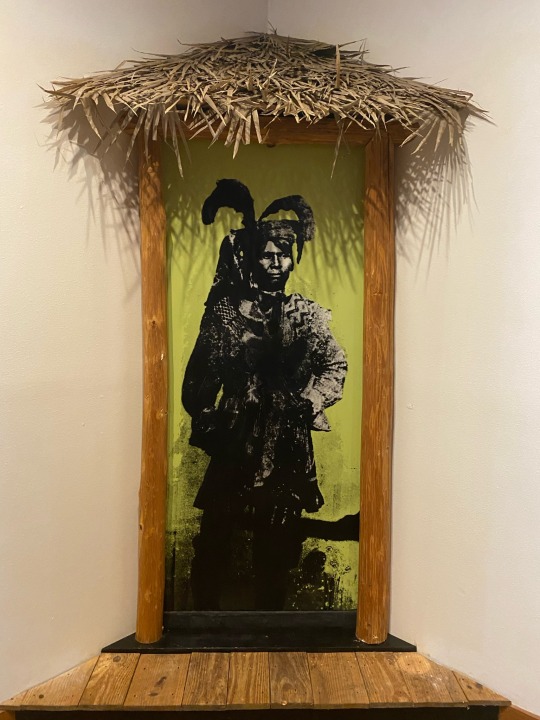
Paz y Progreso 🕯️
#witchcraft#florida#bioregional animism#bruja#brujeria#florida witch#santeria#swamp witch#witch#traditional witchcraft#cubanfolkmagic#cuban#cuba#taino spirituality#taino#folk magic#folk witch#espiritismo#atr#folkloric witch#animism
106 notes
·
View notes
Text

Miss Charm Puerto Rico 2023 National Costume
Taino Fantasy: "The Birth of Atabey"
Taking as inspiration the painting "The Birth of Venus", Alejandra Pagán presents us with a "Cemí Taíno", a stone sculpture that embodies ancestral spirits of Puerto Rican nature; emerging from the stone as our
Goddess ATABEY.
Mother of the Taínos, a female entity that represents the Earth and all bodies of water, being one of the most Important for the Caribbean tribes, mainly in Borikén
71 notes
·
View notes
Text

Cotton cemí, cal AD 1441-1624. (the only surviving precolumbian cotton reliquary (cemí ) from the Dominican Republic,) Gossypium sp., anterior human skull (including mandible), internal cane framework for arms and legs with central carved wooden support and stone base, resin, shell, gourd, pigments (?)
Cemí (or Zemi) refers not to an object or image but to an immaterial, spiritual, and vital force pertaining to deities and ancestors.
3 notes
·
View notes
Text
Websites with information that wasn't available back in 2020 when I was researching Taíno deities claiming a bunch of stuff in 2023 like.... what is your source. Honestly, lmk. Because I dug through the most obscure of databases and difficult to access books with exclusive permission from my school and I found none of what you're boldly claiming right now.
Taíno tribes were as diverse as any culture and seeing the internet treat it all of it like a one-size-fits-all is beyond annoying. "It's zemi not cemí" it's zemí in Cuba and Hispaniola but not in Puerto Rico. "She's a primordial mother not a goddess, 'goddess' is a colonialist construct" don't even get me STARTED on this one.
#the fact of the matter is that spain obliterated most traces of taino culture in PR and what little there is keeps getting shipped off#to the US. arguably Hispaniola has done a better job at keeping their artifacts and displaying them in their own museums.#all we boricuas got is oral history and outdated books from the 70s. just the basics of taino community#and even still i'm curious to know how much of it has been filtered through a white patriarchal lens.#anyway happy 4th friendly reminder that puerto rico is still under oppressive colonial rule!!!! :)#text tag
4 notes
·
View notes
Text
la pieza performatica que hice junto a @mixkaribe y @joaquincerdeiros, “Ceremonia del cazabe” junto al conjunto de mis piezas fotográficas, en honor a la resistencia indígena y africana en nuestras montañas.
la pieza performatica consistió en cultivar la yuca y derramar su jugo sagrado sobre el Cemí Yucahú, purificando así nuestros ritos para con la lucha y la identidad.
que resuene la lucha en nuestros corazones, la esencia y la magia de nuestra poderosa cultura. Jan jan katu. Hasta el próximo viento.
gracias cian @cian.ruth por la documentación.
1 note
·
View note
Text
Guatauba Vol 1 - Tony Touch x Nico Canadá - Historia y Orígenes del Reggaetón, Temp. 01, Ep. 02
Video y texto por Antonio Carlos (@thespectraltiger)
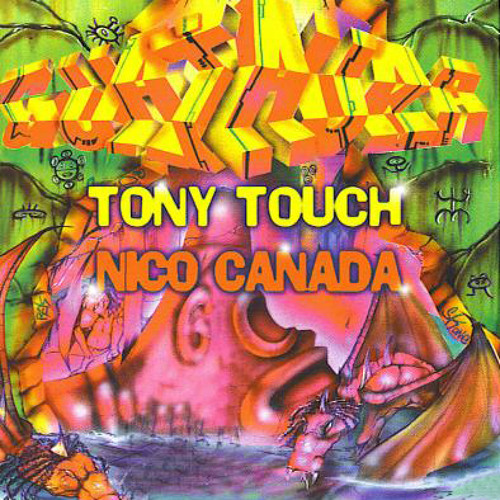
Nos transportamos al año 1997, para ponerle play a Guatauba Vol. 1 de Tony Touch y Nico Canadá, álbum que va del Dancehall, al Raggamuffin, Pounder-Riddim y Rap. Este panorama musical, producido con cuidado, nos recuerda porqué es uno de los lanzamientos clásicos del Underground.
La producción lleva por nombre Guatauba, deidad mensajera taína que anunciaba con nubes, truenos y relámpagos la inminencia del huracán. Nombre que también conocemos por Guatauba Productions y Manolo Guatauba, aunque él no participó en este proyecto.
La portada del disco es una mezcla de graffiti, uno de los elementos fundamentales del Hip Hop, y una representación de un cemí y otros motivos taínos. Es un disco que en términos estéticos mezcla dos tradiciones, la de la urbe, asociada con Nueva York, y la de la cultura taína y caribeña, asociada con Puerto Rico.
Tony Touch es DJ, rapero y breakdancer nuyorican respetado en la comunidad Hip Hop; y Nico Canadá es productor musical, ingeniero de sonido, compositor y dj puertorriqueño que lleva más de 25 años de carrera musical, que ha generado muchas controversias en los últimos meses.
Este álbum es un ejemplo explícito del puente cultural entre Puerto Rico y la ciudad de Nueva York, que ha posibilitado tantas producciones musicales a lo largo de los años.
Guatauba cuenta con artistas puertorriqueños, estadounidenses y panameños, entre los que se encuentran Daddy Yankee, Mexicano, Alberto Stylee, Pirin, Panamasta, pero también a figuras de la cultura Hip Hop de Nueva York como KRS One y Mad Lion.
Los letras de esta producción van del festejo, a narrativas acerca del crimen y la vida en las calles, al amor y la pérdida de éste, así como el fronteo de la habilidad musical tan característico de la cultura del rap.
El panorama lingüístico del álbum es interesante pues se da en las fronteras entre el español y el inglés, recordando que el origen de este género es híbrido y multicultural.
instagram
youtube
¡Sígueme en mis redes sociales! YouTube TikTok Instagram Patreon Facebook Twitter Website
#historia#historiayorigenes#reseñas#nico canadá#tony touch#reggaetón#reggaeton#puerto rico#boricua#nyc#Instagram#Youtube
0 notes
Text
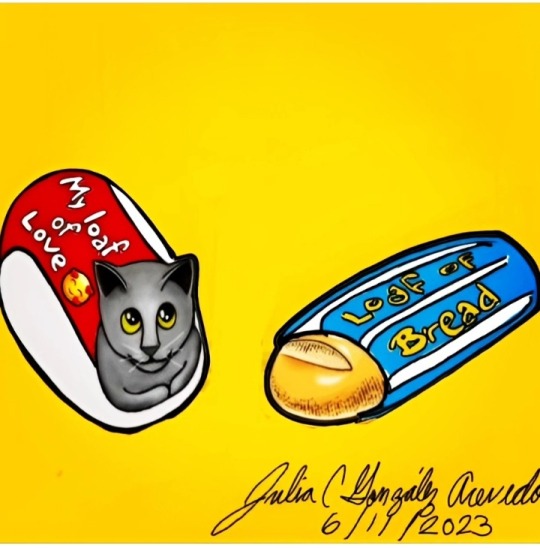
My Cemí Coquí as a cartoon. #catart #bluekitty #art #arte
0 notes
Text
Pagan Misconceptions Clarified: Why Guabancex, is NOT; "Only The Goddess of The Hurricanes, than menaces to The Caribbean; every year?!"
I'll be honest, with all of you: This is the only of my series of posts, than I wasn't so happy to write; but... I feel forced to write it, 'cause as someone than was born and growed in The Caribbean; (And the first time I met Guabancex, she helped me to get out of a very horrid situation) well... I am like least say, "The closest person in Earth, to who she manifest in ways than people can't even imagine" Saying that... This is the last of my "Pagan Misconceptions Clarified" than I would do for a while, hoping than you will learn a lot about each Deity than are close to me; and than the trouble than took me to write this particular post, will be worthy for the reader; if you someday decides to live in this misterious lands, so you can be better prepared. With all of this say: Let's get started!
Guabancex, is The Taino Goddess of The Hurricanes; and even thought many people think this is her only Dominion, she was a very important Deity for The Arawaks across all The Islands of The Caribbean; since The Lesser Antilles, Bahamas; The South tip of Florida, and of course; The Great Antilles, where The Tainos developed the most advanced civilization of The Caribbean. Guabancex, is much more than The Goddess of the destructive storms called Hurricanes; and after you ended to read this post, not only will you know what other powers she have; but... You will know the secret of why she was the most important female Deity in Taino Culture, and why she was extremely feared for them; and why we should have a bit of respect and feared her, today...
Guabancex, according to Arawak/Taino Myth... Is the Daughter of Atabey, (The Mother Goddess of Fertility, than was the first being to exist; and was totally alone in The Void) and is the sister of five other supreme beings; including Itiba Cahibaba, (Her only sister) and Yocahu; (The other supreme being, than Tainos gave the same importance than to Guabancex) Guabancex, was born without a father; equally as her brothers and sister, and she is in a constant conflict with Yocahu; 'cause Yocahu sided with Atabey. Her symbol, is an angry face with the arms stretched in opossite directions like a ''S'; and her name, have different meanings; in Taino's Language, than may means: ''Mistress of The Hurricanes'', ''Mistress of The Wind and Water''; or... ''Lady of The Winds''.
The myth about Guabancex's relation with the Hurricanes, is this: A female Cemí than lives in a country of the Chieftain Aumatex, and she controls the winds; and people gave her offerings of food to appeased her, but... When this failed, she get out of her place always angry; and calls to her two assistants: Gautauba, (her herald than announces the arrival of Guabancex with the hurricane, by blowing a fotuto [Hollow seashell with holes, to makes music with it]) and Coastriquie; (The Cemí of The Sea, than controls water and causes flash floodings) and she started to tell to the other Cemies, (Plural for Cemí) to help her with her destructive labor; and she started to blow the winds more stronger and violent, and she began to spiral joining the waters of Coastriquie with the thunder and lightning of Gautauba; she releases the winds and waters, which finally destroys to everything in their path.
Guabancex, is too: The Goddess of The Winds and Breeze, The Goddess of The Rain; and... The Only Female Cemí and The Ruler of The Cemies!
The Goddess of The Winds and Breeze: Tainos, depended so much of good weather to fish; and, to have a day of less agobiant heat; so they prayed to Guabancex to have a calm enough so they could have fish to eat, and a refreshing day to do their chores more easily!
The Goddess of The Rain: The no. 1 activity of Taino's Economy, was Agriculture; which means than they depended of fresh clear water for their plantations, to make possible the survival of their families and communities. Even when they tended to go to Yocahu; (The Taino God of Vegetation, and The God of their Principal Food: The Yucca's Root) to have a succesful harvest... To makes that to happen, they depended completely of The Rain; so they used to prayed a lot to Guabancex, so plants could grow; so they could have their food on the table!
The Only Female Cemí and The Ruler of The Cemies: Cemí, was the name than recieved the minor Deities in The Taino Pantheon; and Guabancex, stand out for being the only female Cemí; but... She was called too, "The Most Powerful of all The Cemies''; and... She was so powerful and feared for the other Deities, than the other Cemies; (Plural for Cemí) did what she commanded, at once!
Guabancex's importance resides in two things: The first, as a very fierce Deity; she was one of the most followed Taino's Gods in The Caribbean, to the point than The most Powerful and Rich Cacique (Chieftain in Taino) of The Hispaniola; it was said than he was a follower of this Deity. Because The Tainos depended heavily in fair weather, for most of their daily tasks; and Hurricanes were feared not only for the destruction they left, but too; for the disease and famine they left behind, so appeased the fury of Guabancex was essential for The Tainos could keep their almost idylic life. And, the second; is because Guabancex... Was the Mother of The Taino People, with Yocahu!
One Spaniard recorded, than Guabancex's Followers; people of all the ages with an adorn on their forehead with an angry face in it; used to peregrinate outdoors, and for a moment they stoped to walk, and started to put angry expressions on their own faces; as a way to show their devotion to her, before to start to walk again to their next stop.
And, now... Why Guabancex was so feared by The Arawak/Taino people?! The only way to understand this part, is going back in time; when Spaniards arrived to The Caribbean, more than 530 years ago: Columbus and his crew, encountered in The Hispaniola; (The island than today shares Haiti and The Dominican Republic) with a Chieftain called Guacanagarix, (to who he befriended, after Guacanagarix rescued to Columbus and his people; of the Sinking of Columbus's Main Ship, The Santa Maria) and decides to lived there for the rest of his plan of Conquest. Guacanagarix, informed to Columbus of anything; including about an phenomenon, called Hurricane, than was the worst possible storm ever. Columbus, doesn't have to wait much; to found it: Two hurricanes hitted The Hispaniola's town of Isabela, and the destruction was so grave; than Columbus had to abandon the first Spanish Settlement, forever. At the passing of time, (after The Tainos were almost extinted...) people got interested in their language; including the meaning behind the word Hurricane. Hurricane, means in Arawak/Taino; "Wind of The Gods", 'cause Taino believed than the same where a punishment of The Gods sended for doing evil, from... Yes, you guessed it: Guabancex!...
But, now you may think: "Why the free lesson of History and Native American Language, here?!...'' As someone said, once: ''Patience, is a virtue!'', and... I say now, why I did this!
Hurricane, was thoughted to being only the name for the storm; and... It was thoughted too, than the Taino God Hurakan; (The Caribbean God... Not The Mayan God!) was the one than rules over this element... The thing is, than after many studies; we got the conclusion, than The God Hurakan, NEVER was the one than mades and sended the hurricane, but it was Guabancex; the one than sended it all this time. And, not only that: She is the one than give orders to Hurakan to helped her, in her destructive mission!
But, this is not the only surprising finding about Guabancex; and her relation with the Hurricane...
The Tainos, left their presence in language today; with many words than passed to Spanish; English, and into many languages in The World; and with a combination of language and research, it came another conclusion than is very frightening about The Hurricane, and Guabancex: Hurricane, is not only the name for the storms in the Caribbean... According with some stories left at the time of The Conquest in The Caribbean, The Tainos named too; as Hurricanes, to: Earthquakes, Tsunamis; Droughts, Volcanic Eruptions, Floods, Mudslides; Landslides, Storm Surges, Riverine Flooding, High Winds; Flash Floods, Wildfires, Severe Local Storms, Strong Winds; (and, in rare ocasions; Tornadoes, Hailstorms; Lightning Storms, Waterspouts, Sinkholes, Heat Waves... And Cold Waves.) Yes... This is the creepiest truth, about Guabancex: She rules, over ALL THE DESTRUCTIVE PHENOMENONS; THAN OCURRS IN THE CARIBBEAN! (If you want to scream, you can do it now: I was too scared, after knowing this a few years ago; than I couldn't scream at all!)
Now all you know, with who I have to deal with: She is the only Deity, than my relation is not very good; but... I'm not the kind of person than will left to others, the brunt than entails having a Deity like her; in their life. (After all, I'm still somehow grateful of her; even if I'm not very fond of her, or... Of her methods!)
Curious Fact: Two years before the arrival of Spaniards to The Hispaniola, Guarionex; (one of the most powerful Caciques in the Island), recieved a vision of a Cemí, than told him than the profecy than left Yocahu before to leave to his children; The Tainos, ''Than one day will came men, with skin of the color of the clouds in the days of sun; than will destroyed to their poor descendents'' It was about to happen: It was said than the Cemí than tried to prepare to The Tainos, to avoided the sad fate than fell over them; was Guabancex. (I can't imagine how she felt, when all of them were enslaved; killed or died for the brutal and merciless explotation of the Spaniards, and than before they died... They converted to a new religion, and before to die; they started to behave worse than ever!)
The thousands of Spaniard Ships, than are sunk in the deep of The Caribbean; today, was the response of not only a Deity; than losed to all her followers: She was a mother than losed too, TO ALL HER SONS AND DAUGHTERS! (If you have a family member, or someone than you love as family; and is near of you, a day after the date when Spain legalized the cruel repartations of Tainos in The Caribbean; many centuries ago... Send them a message telling them how important they are for you, or; if you have them at the reach of your arms; please gives them a hug. [Is only when we read things like this, than we starts to apreciate what is really important in our lifes!])
The mayority of The Caribbean people than lives today, have mostly forgot their Arawak/Taino heritage; and what is more, of the Myths of The First Inhabitants; but, by my own experiences I can tell you than Guabancex's presence is real; and she still have power in her Lands. If you ever live in The Caribbean, remember than her only demand; is not doing evil to any person and living being, while you are there. (For what I have seen... She has not mercy with abusers, bullies; violent people, people than do harm willfully to family or friends, or... Than hurt intentionally to the innocents!)
And this is all, about The Taino Goddess of The Winds, Breeze; Rain and Hurricanes, than have Absolute Power over all The Caribbean: Guabancex!
Have all of you a Life, where you can always be in good terms with The Deities, in any land you were born, travel or lives... So Be It!
#pagan misconceptions clarified#pagan writings#pagan writer#paganism#pagan goddesses#pagan goddess#taino goddess#pagan goddess guabancex#taino goddess guabancex#taino goddess guabancex is not only the goddess of the hurricane#guabancex deity#pagans#pagan#eclectic pagan#ecletic pagan#hellenic pagan#lokean#pagan from the caribbean#pagan of color#yes im a pagan of color#dont like it dont follow me then
6 notes
·
View notes
Text
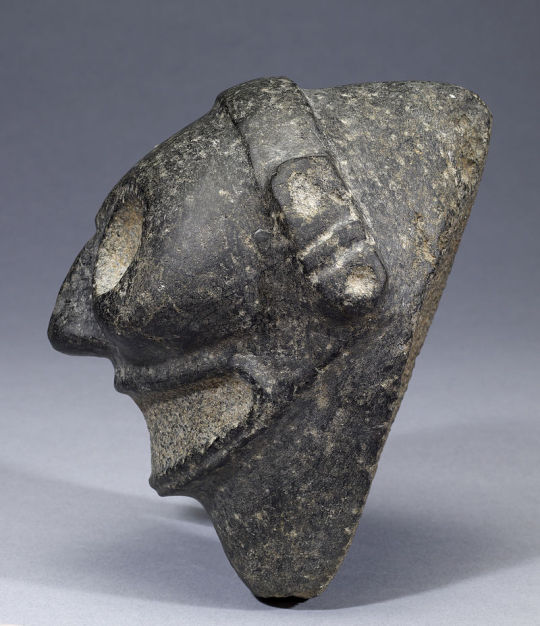
Taíno spirituality centered on the worship of zemís. A zemí is a spirit or ancestor. The major Taíno zemis are Atabey and her son, Yúcahu. Atabey was the zemi of the moon, fresh waters, and fertility. Other names for her include Atabei, Atabeyra, Atabex, and Guimazoa. The Taínos of Quisqueya (Dominican Republic) called her son, "Yucahú Bagua Maorocotí", which means "White Yuca, great and powerful as the sea and the mountains". He was the spirit of cassava, the zemi of cassava – the Taínos' main crop – and the sea.
Zemí was also the name the people gave to their physical representations of the Zemis, whether objects or drawings. They were made in many forms and materials and have been found in a variety of settings. The majority of zemís were crafted from wood, but stone, bone, shell, pottery, and cotton were used as well. Zemí petroglyphs were carved on rocks in streams, ball courts, and on stalagmites in caves. Cemí pictographs were found on secular objects such as pottery, and on tattoos. Yucahú, the zemi of cassava, was represented with a three-pointed zemí, which could be found in conucos to increase the yield of cassava. Wood and stone zemís have been found in caves in Hispaniola and Jamaica. Cemís are sometimes represented by toads, turtles, fish, snakes, and various abstract and human-like faces.
21 notes
·
View notes
Text
Caribbean Folk Saints and Mighty Dead: Guamá
This series of Folk Saints and Heroes is based around connecting to the Land through the Ancestors of Place and the energies and spirits they venerated, so it only seems fitting to begin with one of the Indigenous Ancestors who loved this Land enough to want to fight for it.

Background
In the early 16th century, only 30 years after first contact between Columbitch and the Taínos, rebellions against the colonial government were ongoing. The death of the Spanish Governor of Cuba left the perfect opportunity for one Brave Ancestor. Guamá was a Cacique, a Taíno Tribal Leader, in Baracoa in Eastern Cuba. An allied Cacique from Kiskeya/Ayiti (Modern-Day Hispaniola) named Hatuey travelled to Cuba with a militia, warning Guamá of the Spaniard’s Bloodlust. Guamá saw this chance to fight back and took it. Him and his Wife, Casiguaya, were known both as skilled fighters who led a decade long rebellion reaching from Baracoa, West to the Sierras. These rebellions were succeeding, and more indigenous folk joined Guamá’s forces. Guamá did not die in battle, you can read his whole biography on wikipedia here.
I want to focus less on his biography and more on his veneration as a Folk Spirit of Rebellion. Throughout the Caribbean, various historic Taíno figures, both Male and Female, are venerated. One group we see many Spirits come from is the Caciques who led rebellions. These Spirits are often called on for strength and fighting oppression, as well as even in place of the Cemí. Many of the traditional spiritual practices were passed on through the veneration of these Elevated Dead. Guamá and Hatuey are two of the most important in Cuba.
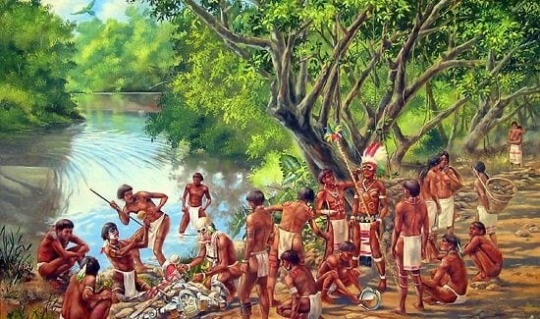
Praxis
Here is a translation of a song, linked here, that talks about going to ‘El Monte with Guamá’.
I work with the Moon, I work with the Sun Sun and Moon, Lend me your brightness. Oh Mama, Oh Mamalina, I will go to El Monte, with Guamá
Songs are integral to many Caribbean systems of belief, and this one is no exception. In the Eastern area of Cuba this song and Guamá are from, Espiritismo Cordón has flourished where the use of these songs and forming a chain either calls or sends spirits away, which is interesting to think about considering how Taíno Areytos functioned. This song specifically is sung in all times of life; celebration, while working, mourning, traveling. It is simply a plea to the Powers That Be and the Ancestors to guide us.
In my personal practice, I have honored and venerated Guamá through prayer and song, as well as by reciting his story orally at the area I keep my Spirits of similar commission. On a personal level, I have petitioned Guamá and Casiguaya together for strength, protection and resistance and Guamá on his own for domination workings, as he was undefeated and died due to hubris and not battle.
His death date is June 6th, so this may be a day you choose to reach out or throw a feast for him. When working with Indigenous Caribbean Ancestors, it is important not to mix certain elements of African and European practices. For this reason, I usually keep offerings simple, including only foods and flowers that are native to the area or that the person reportedly enjoyed. Tobacco, Liquor, and Water can all be taboo, or extremely integral, depending on the Spirit.
For Guamá, I do offer Tobacco, but no liquor. I offer Native foods, like casabe and a higüero of water. I make my petition in words and song, rather than in writing. Guamá is a great ally to any Indigenous Caribbean who faces the issues of oppression, or a particularly crafty enemy. His hot nature can make him chaotic to work with, but respect and appropriate offerings to placate him in times of communication can go a long ways.
Bendiciones 🧿
#witchcraft#florida#bioregional animism#bruja#brujeria#florida witch#santeria#swamp witch#witch#traditional witchcraft#espiritismo#brujería#brujas of tumblr#brujos#santería#taino spirituality#taino#cuba#cuban#caribbean#atr#folk magic#folk witch#folk witchcraft#folkloric witch#animism
17 notes
·
View notes
Text
Me: I think think having a miraculous from my country would be nea-
Me: *wacking myself with a stick* DONT *wack* LET *wack* THEM *wack* TOUCH *wack* THE *wack* CEMÍS *my skull is fractured in three different places*
47 notes
·
View notes
Photo
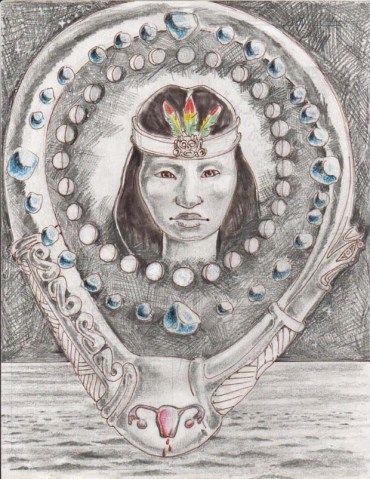
Karaya
Most often called “Diosa Luna.” Moon goddess/deity/cemí of the Taíno people. Holy womb. Found on the Caney Circle website.
#goddess#cemi#Cemism#Queen Mother#period positivity#art#indigenous#indigena#indigenous religion#caribbean#taino#thealogy#women are divine
16 notes
·
View notes
Photo


Taíno basalt zemí (800 – 1500 AD). It is 12.1 x 16.5 cm.
The ancient Caribbean peoples kept the skulls of their ancestors in special baskets as objects of spiritual devotion. They believed that the body's spiritual power resided in the head, especially the face, through which people could communicate their emotions and spirit. However, these skulls gradually disintegrated over the centuries, so later Taíno (1000 – 1500 AD) made stone representations of them instead.
These stone heads are often called “Macorix heads”, as many were found near San Pedro de Macorís in the Dominican Republic. These Macorix heads are part of a larger group of objects called zemís or cemís – this term refers to both ancestral spirits and the earthly containers for these spirits.
The zemi didn't have to have a realistic depiction of the spirit's face, and so most of them were quite generalized. A headband or diadem, wrapping around the high forehead and ending at the ears, showed high status.
43 notes
·
View notes
Text
taino masterpost!
taino masterpost
so i made a post a whiiiiile ago trying to signal boost taino/hoodoo blogs. more to connect with my ancestral practices. and i’ve gotten a few messages that asked me what i found and in talking with some of y’all, i’ve decided to make a masterpost of the information that i’ve found. maybe we can all compile our posts together and learn! so here goes!
----
the information below i got from this website: study & taino
most of the information, you have to unlock by subscribing to the website and i can’t afford to do that yet, so yeah...if any of y’all would like to unlock it and spread the information around, that’d be great. and before y’all say “that’s plagiarizing” or “just subscribe”, i’d like to remind you...this is my ancestral right. my ancestors knew this. the only reason i don’t is because colonization happened to my people and we lost a lot of information and my family did not pick up the practices. this is my culture. i ain’t plagiarizing shit. thank u, next.
---
Taino Gods and Goddesses
The Taino word for 'gods' were zemi. These zemi were the various gods, goddesses, spirits, and ancestors they worshiped. Zemi was also the name given to the wooden or stone effigies of these gods. These gods and goddesses are still being researched today, and only little bits of information have been confirmed, but there are several gods that we do have a decent amount of information about.
Many of the Taino gods are still being uncovered, but we do know about a handful of major deities.
Atabey: Considered the most supreme of the gods, the goddess Atabey is important because she is the mother of gods and the initial creator. In fact, she even gave birth to herself, making her one of the more powerful of creation gods in mythic study. She was also the goddess of music, fertility, and beauty. She was depicted as a frog-like figure who is, more often than not, in the birthing position, to symbolize her importance as mother of all.
Guabancex: Goddess of storms and the destruction they bring, Guabancex actually has a lasting legacy in English culture. She was often accompanied by two twin entities who announced her arrival: thunder and wind. Together with them, they created the juracan, a word the Spanish settlers would later translate to huracan, which is more well-known to us as a hurricane. Due to the violent and destructive aftermath of hurricanes, Guabancex was often portrayed as having a very volatile temper.
Yocahu: Yocahu is the leading god of the Taino people. He is the son of Atabey and god of the sea. However, like most gods who lead a people, Yocahu lives in the sky to keep watch over the Taino people. He is also considered a god of fertility as well, and was associated with the Taino's main crop, the root known as cassava. Farmers would bury statues of Yocahu to bless their fields in the hopes of assuring good crops.
Some minor gods and goddesses helped fill out the pantheon.
Baibrama was an assistant god to Yocahu who helped with the planting of cassava. He was also a healing god who would cure people of poisoning from cassava.
Boinayel and Márohu were the twin gods of the gentle rains to grow healthy crops.
Finally, there was Maketaori Guayaba, the god of the underworld.
----
wikipedia’s information on taino culture: taino wiki
some, if not all, of this information is from the wiki that i just took out as important to me:
Taíno spirituality centered on the worship of zemís. A zemí is a spirit or ancestor. The major Taíno Zemis are Yúcahu and Atabey. Yúcahu, which means spirit of cassava, was the Zemi of cassava – the Taínos' main crop – and the sea. Atabey, mother of Yúcahu, was the zemi of the moon, fresh waters and fertility.
The minor Taíno zemis related to the growing of cassava, the process of life, creation and death. Baibrama was a minor zemi worshiped for his assistance in growing cassava and curing people from its poisonous juice. Boinayel and his twin brother Márohu were the zemis of rain and fair weather, respectively. Guabancex was the non-nurturing aspect of the zemi Atabey who had control over natural disasters. Juracán is often identified as the zemi of storms but the word simply means hurricane in the Taíno language. Guabancex had two assistants: Guataubá, a messenger who created hurricane winds, and Coatrisquie who created floodwaters.
Maquetaurie Guayaba or Maketaori Guayaba was the zemi of Coaybay or Coabey, the land of the dead. Opiyelguabirán', a dog-shaped zemi, watched over the dead. Deminán Caracaracol, a male cultural hero from which the Taíno believed themselves to be descended, was worshipped as a zemí. Macocael was a cultural hero worshipped as a zemi, who had failed to guard the mountain from which human beings arose. He was punished by being turned into stone, or a bird, a frog, or a reptile, depending on interpretation of the myth.
Zemí was also the name the people gave to their physical representations of the Zemis, whether objects or drawings. They were made in many forms and materials and have been found in a variety of settings. The majority of zemís were crafted from wood but stone, bone, shell, pottery, and cotton were also used. Zemí petroglyphs were carved on rocks in streams, ball courts, and on stalagmites in caves. Cemí pictographs were found on secular objects such as pottery, and on tattoos. Yucahú, the zemi of cassava, was represented with a three-pointed zemí, which could be found in conucos to increase the yield of cassava. Wood and stone zemís have been found in caves in Hispaniola and Jamaica. Cemís are sometimes represented by toads, turtles, fishes, snakes, and various abstract and human-like faces.
Some zemís are accompanied by a small table or tray, which is believed to be a receptacle for hallucinogenic snuff called cohoba, prepared from the beans of a species of Piptadenia tree. These trays have been found with ornately carved snuff tubes. Before certain ceremonies, Taínos would purify themselves, either by inducing vomiting with a swallowing stick or by fasting. After communal bread was served, first to the zemí, then to the cacique, and then to the common people, the people would sing the village epic to the accompaniment of maraca and other instruments.
One Taíno oral tradition explains that the Sun and Moon come out of caves. Another story tells of people who once lived in caves and only came out at night, because it was believed that the Sun would transform them. The Taíno believed they were descended from the union of Deminán Caracaracol and a female turtle. The origin of the oceans is described in the story of a huge flood, which occurred when a father murdered his son (who was about to murder the father). The father put the son's bones into a gourd or calabash. When the bones turned into fish, the gourd broke, and all the water of the world came pouring out.
Taínos believed that Jupias, the souls of the dead, would go to Coaybay, the underworld, and there they rest by day. At night they would assume the form of bats and eat the guava fruit.
----
Women
Taíno society was based on a matrilineal system, meaning that descent was traced through the mother and that women lived together with other women and their children apart from the men. Because of this Taíno women seem to have had a lot of control over their lives, their co-villagers and their bodies. Since they lived separately from men, they were able to decide when they wanted to involve in sexual contact. This is in part what shaped the views of conquistadors who came in contact with Taíno culture. They reportedly perceived women as "macho women" who had strong control over the men.
Most historical evidence suggests that, although unclear, it seems that Taíno gender roles were non exclusive to most of the activities done in their community.
Taíno women played an important role in intercultural interaction between Spaniards and the Taíno people. When Taíno men were fighting intervention from other groups, women were left back home turning into the primary food producers or ritual specialists. Women seem to have participated in all levels of the Taíno political hierarchy, they went up to occupy roles as high up as being caciques. This meant that Taíno women could potentially give permission to other Taíno men and women to take on important tasks and that they could too make important choices for the village. There is evidence that suggests that the women who were wealthier among the tribe collected crafted goods that they would then use for trade or as gifts.
Despite women being seemingly independent in Taíno society, coming into the era of contact Spaniards took Taíno women as an exchange item, putting them in a non-autonomous position. Dr. Chanca, a physician who traveled with Christopher Columbus, reported in a letter that Spaniards took as many women as they possibly could and kept them as concubines. Some sources report that, despite women being free and powerful before the contact era, they became the first commodities up for Spaniards to trade, or often steal. This marked the beginning of a lifetime of theft and abuse of Taíno women.
----
taino - english words and meanings: https://tainopride.webs.com/tainoenglishglossary.htm
taino people names: http://www.taino-tribe.org/teist-h1.htm
taino words: http://www.taino-tribe.org/tedict.html
some more taino words: http://www.native-languages.org/taino_words.htm
more taino information with some bonus links to books about taino culture: http://www.topuertorico.org/reference/taino.shtml
a beautiful taino calling song that always gets stuck in my head! https://www.youtube.com/watch?v=w7Lv4377mpI
that’s all i got so far y’all! if you feel like adding more, please do! let’s all learn together about our culture and our rightful magick!
#taino#brujeria#bruja#culture#puerto rican#cuban#dominican#arawak#hoodoo#ancestral practice#taina#learning
29 notes
·
View notes